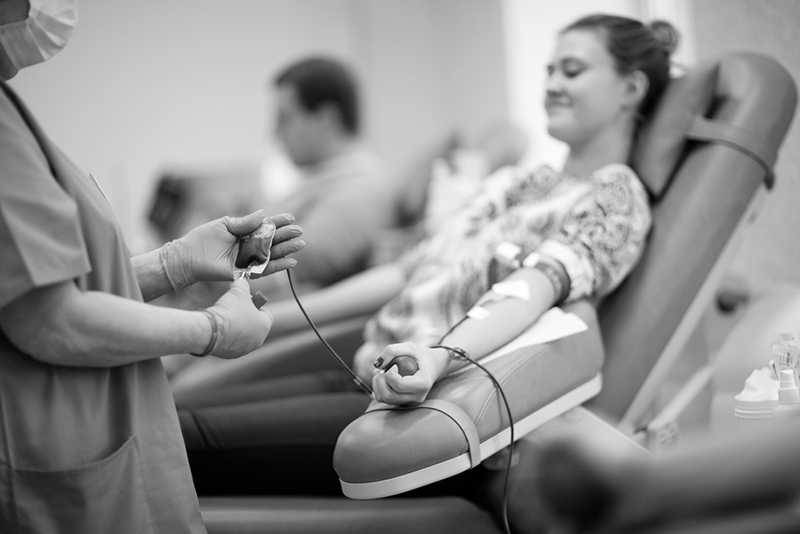Are you unsure of what happens when you donate blood? Donating blood is not just a five-minute process. You can’t simply walk in, get hooked up to a machine and walk out again.
Each time you donate you have to provide your ID and fill in a confidential health questionnaire with information such as age, weight and whether you have had any recent illnesses. It’s there to protect you as well as the person who is going to receive your blood.
A nurse will then check your blood pressure and give you a ‘finger prick’ test to extract a tiny drop of blood which is then inserted into a machine to check your haemoglobin levels.
Haemoglobin is a protein which contains iron and helps carry oxygen around the body. If you don’t have enough your muscles and organs (or those of the person who receives your blood) won’t get all the oxygen they need.
The actual donation
When that’s all done, you sit in an armchair and the nurse will insert a needle into your arm.
It slowly extracts blood, which then travels up a clear tube into a sealed blood bag.
How much blood do they take?
The human body contains about five litres of blood. When you donate they take about 500mL, or about 10 per cent of your blood. But don’t worry, you won’t be short on blood for long because, whether you give blood or not, your body is constantly making new blood to replace the old.
How long does it take?
The actual blood donation usually only takes between five and 15 minutes, but after it’s done you’re told to wait for a while to make sure you’re feeling OK. You’ll also get a free drink and snack before you’re sent on your way. The whole appointment, start to finish, takes about one hour.
What happens to the blood?
The donor’s job is now done but the blood’s journey is far from over. As the ABC explains, once your blood is donated, it will be packaged and sent to one of four Australian Red Cross processing plants located in Sydney, Melbourne, Brisbane or Perth.
The donations are then unpacked, weighed, logged in a computer system and tested for various things including HIV/AIDS, hepatitis B and C, syphilis and blood type.
Separating the blood
The blood is then placed inside a canister which is put in a centrifuge, a machine that spins around extremely fast, shaking the blood and separating it into three parts: red blood cells, platelets and plasma.
Blood service spokeswoman Erin Lagoudakis explained the process to the ABC like this: “Blood is like a salad dressing – it just naturally separates. The centrifuge just helps the process.”
The three components, now separated, are each stored in a different way.
Red blood cells can be stored in refrigerators at 6ºC for up to 42 days. The platelets are stored at room temperature on moving shelves called agitators to stop them from clotting. The plasma, which is actually yellow in colour, is snap frozen.
All the donations are then sent to the storage facility, the ‘blood bank’, to wait for their mission.
Placing a phone order
Medical centres and hospitals across the country place phone orders when they require a blood product. It’s kind of like an extremely high-tech version of ordering a pizza.
You tell them exactly what you want – red blood cells, AB positive, no anchovies – and the staff at the blood bank select if from the fridges and freezers of the blood bank, package it up and send it by courier to its destination.
Who needs red blood cells, plasma and platelets?
Most often, the red blood cells go to trauma patients or women who’ve had complications during childbirth. Cancer patients are the most common recipients of platelets. Burn victims and those with immune deficiencies often need plasma.
This information has hopefully helped you gain a better understanding of what happens when you donate blood. It is also important to know what happens when you donate blood so you are aware of what will happen. If you speak to a home doctor in Sunshine Coast during after-hours call House Call Doctor at 13 55 66.





